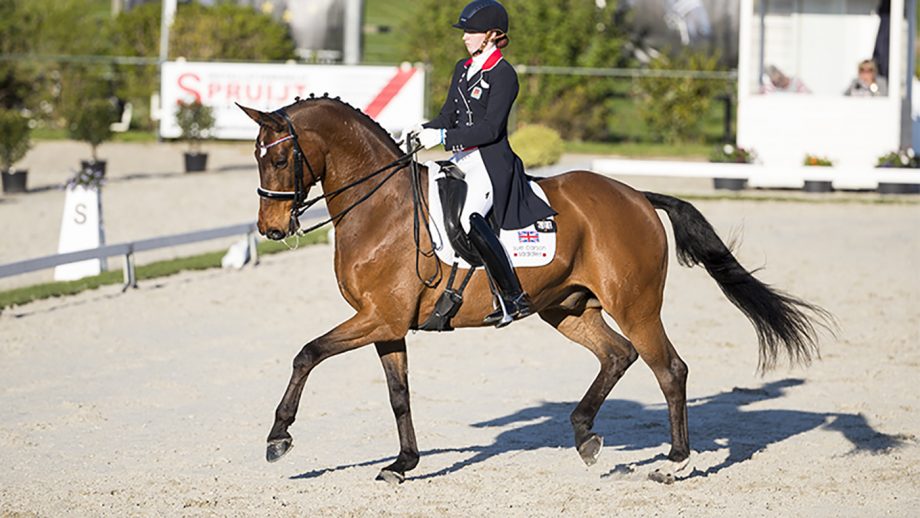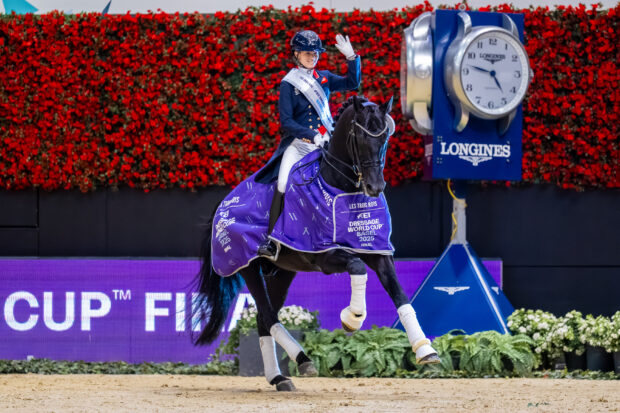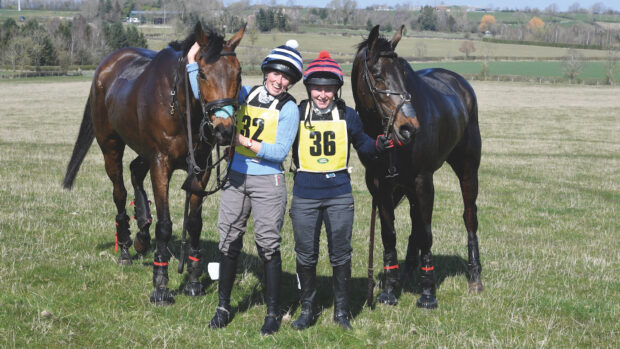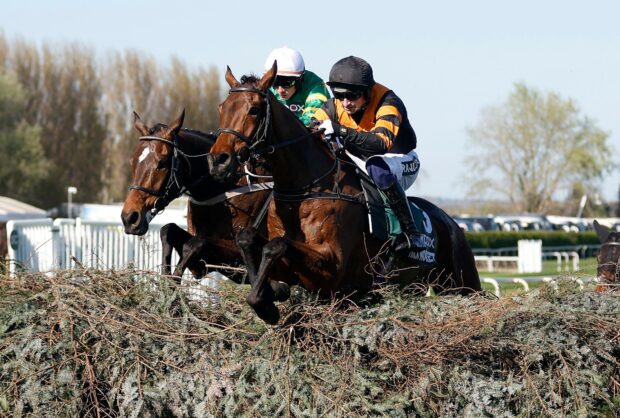Hi all and welcome back!
As the rain pours outside, I’ve sat down to write a different type of blog. As with everything I write, it is all my own opinion and views.
I have a question for you all: how physically fit and strong do you ‘have’ to be to do dressage?
Personally, I don’t believe you have to be physically strong to do dressage and I think there are a lot of people who would benefit from going to the gym less, rather than more.
My reasoning behind this is that dressage is fundamentally about skill, harmony and classical training. Not who can pull the hardest because they spend their spare time deadlifting in the gym. Of course this is a very blunt statement, but I believe it needs to be said.
When I was a seven-year-old child, my mum could plonk me on Lusitano stallion Diabo and I could make him piaffe, passage, skip, bow — anything I asked, he would do. Aged seven, was I strong and fit? No, but Diabo was so well schooled that he didn’t need physical force to make him perform, just a light touch and the correct aid. So why is the new fashion trend to spend as much time in the gym as in the saddle?

Me aged seven riding piaffe on Diabo
I’m lucky enough to get to ride several high-powered, big-moving horses a day. This alone keeps me in shape and ‘riding fit.’ Once a week I do a pilates session with my cousin Lauren, who is a body control pilates instructor. I love pilates, mainly the mat work, but recently I tried the reformer which was super. I think pilates is the closest you can get to replicating the muscles used when riding. I have done several gym sessions in the past with personal trainers, who were super in their field of expertise, but that field was not the dressage arena, so really, they have no idea what it takes to ride a grand prix test. Lauren is a rider so she understands the requirements needed, like stretching, being soft and supple, flexible yet stable. We work on being able to isolate and move individual muscles while keeping full core control. Which, when you think about it, is just like what you do on the horse, isn’t it? You keep still and soft through your body and gently move an ankle, or a seatbone to create your desired aid. You don’t have to throw your bodyweight from side to side to make one-time tempi-changes for example, if your training has been correct you need but the slightest movement of your heel. So why do we need to all be made of muscle to achieve this?

Working in a one-on-one session with Body Control Pilates instructor Lauren Fois
Of course, the flip side of the argument is that with scores getting ever higher and medals won by a fraction of a percentage, riders are working towards perfection and trying to make marginal gains in tests. Perhaps if they do more squats and are stronger through the gluteal muscles they will have a 0.5% increase in the passage mark? Maybe they will. But shouldn’t we as a collective whole be aiming to get that 0.5% mark through the gentle harmony with our horses instead?
Here at Turville Valley Stud, we all stick to the training methods that originate from the likes of Nuno Oliveira and Luis Valencia — classical masters of dressage — as my mum learnt from them out in Portugal. We aim to incorporate these historical methods into the modern day competiton arena. My mum always says to me that “you should hold the reins in the same way that you would hold a small child’s hand while walking down the high street. Not hard enough to crush their delicate fingers, nor loose enough that they can slip through your own fingers and run off into on coming traffic. Make it soft enough that they want to keep holding onto you, but if they want to veer off into the sweet shop you can give them a tiny squeeze to keep them on the right path.”

Me learning balance from a young age
With this in mind, the strength needed to achieve this is but that of the strength needed to tap away on a keyboard, for example. The pull to stop the child going into the sweet shop (aka the pull on the reins to perform a rein half halt) is made with the fingers, not the force of your arms. The consistent contact doesn’t need to be any more than the pulling force of a five-year-old child. I think we can all agree that anyone has the physical strength to do this; as in its entirety it requires no physical strength.
So why do I keep seeing dressage riders in the gym, pumping weights to get the arms and back stronger, when it isn’t needed? Frankly, if your horse is so strong that you feel you need to get stronger to hold them together and on the bridle, I suggest making your training methods better, rather than cheating and using physical strength to achieve it. This is dancing with your horse, not SAS Who Dares Wins!
Another thing that in my experience is not beneficial to riders is running to keep up fitness. Running jars the hips with every step, compressing the top of the thighs and making everything tight around the lower body. To move with the movement of the horse, you need to have soft open hip flexors and legs that sit light and loose — so the opposite to running. Maybe running will help with overall fitness and help support a strong cardio vascualar health, but don’t mistake it for helping boost your dressage score — I don’t believe that the two have any correlelation, but if anyone can prove me wrong then please do!
However, I do believe that you should be the correct weight for your horse. But this also goes with that you can ride heavy or light. An 8st person can ride like a sack of potatoes while a 16st person can carry their own weight. Honestly I could write about this all day long!
Continued below…

Joanna Thurman-Baker’s dressage blog: ‘no horse is perfect and it’s about time we stood up and admitted it’
Joanna has made some tough decisions over the past few weeks...

Subscribe to Horse & Hound magazine today – and enjoy unlimited website access all year round
I might also add that this isn’t me saying you should slack off any kind of physical exercise and just eat cake and gin all day. Staying fit is an essential part of overall being a successful and healthy human being. But consider what type of rider you want to be before your hit the gym — do you want to teach your horse through your own strength, or through the cleverness of your mind? Through force or through careful training methods and being at one with your horse’s mind?
That’s it from me for now… hopefully I have given enough food for thought. Until next time,
Joanna x
Do you share Joanna’s views about time spent in the gym? Or do you have an alternative viewpoint you would like to share with us? Email hhletters@ti-media.com with your name and nearest town for the chance to be featured in the letters page a future issue of Horse & Hound magazine…
Would you like to read Horse & Hound’s independent journalism without any adverts? Join Horse & Hound Plus today and you can read all articles on HorseandHound.co.uk completely ad-free




